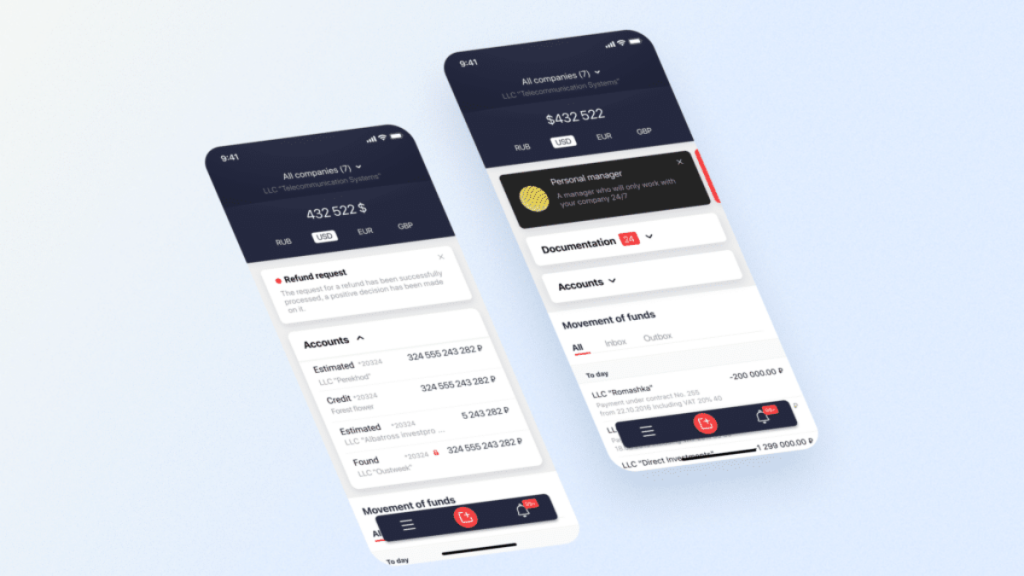The banking sector is changing rapidly. Along with the traditional banks with a long history, there are neo-banks-fintech companies that do not have physical branches, but instead offer innovative digital banking. Among them are Monzo, Monese, Revolut, N26, and Monobank. The global digitalization of banking products is creating new trends in the design of mobile applications, and at the same time – new challenges.
The first banking applications had a very basic set of features. Applications began to offer loans, installments, installment payments, and more. That is, they have become full-fledged competitors of physical departments. Now banks are going even further. They think not only about selling their services but also about strengthening interaction with users. This is how cashback and bonuses appear at the invitation of friends. In other words, modern banking applications try to make their users happy. Are you building a neobank or trying to implement the right payment system? Strive to meet your business needs and satisfaction for your customers.
What is the most Trending?
- Video verification;
- Search for people nearby to transfer funds;
- Credit card sharing. For example, parents can share their cards with their children, or you can create a joint account to travel with friends;
- Smart PFM (Personal Financial Management) systems that allow you to analyze your income and expenses;
- Personalization using artificial intelligence technologies;
- Integration with other companies, such as insurance. Or even creating marketplaces based on a banking application.
- Integration of augmented reality technologies and voice control. For example, voice payments. Gamification;
- Environmental and charitable sections. Their goal is to draw attention to carbon footprint reduction, ocean cleanup, and other natural initiatives.
In addition to visual elements, more and more banks are following the path of personalization – adapting their product to the needs of a specific part of the audience. Banks need to hire or set up testing laboratories and understand how they can benefit their customers. Personalization is one of how a bank can be more customer-oriented. Given the needs of different audience segments, work to create user-friendly interfaces.
There are steel patterns in the design that we are all used to. And when we just change these patterns for no reason, we brazenly steal time from users. Personalization is a good thing when it’s appropriate. There is a classic standard for personalization. For example, light or dark themes, VIP interface, or other design elements that help increase the loyalty of a particular group of users. However, with the personalization of everything else, you should be careful and study your audience well.
Not boring design is something that people remember. But it needs to be dosed. You don’t have to add animations or characters to make a fantastic design. But you should be able to mute most of the design elements to place non-boring accents on their background successfully. So you can control the attention of users.
How to make your Banking App Safe?
You have almost certainly heard of Know Your Customer (KYC) – standards for financial institutions that reduce the project’s and clients’ vulnerability to criminal activity. It establishes the client’s identity, assesses the risk of money laundering by clients, and evaluates the nature of the financial activity to ensure that it is from a legitimate source. The customer information provided to you, while being your greatest asset, remains confidential information. Your behavior with him can be a strong trust factor or reference point. The KYC provider allows you to solve a critical issue. If you combine onboarding, KYC, and CRM from the start, you will be able to know the flow of all stages of your customer’s lifecycle. Every side of their personality is available for tracking and analysis. KYC providers usually offer ample space, and many companies can provide KYC inexpensively and reliably in most cities worldwide.
How to make your Neobank Flexible?
An API allows you to adapt your application to other existing products or services without having to know their code and spend extra money. For example, the API aggregator enables you to work with several payment systems at once from a single point of implementation. The concept of API aggregators emerged from the development of open banking, and API aggregators are already greatly improving the flow of digital banking technologies even in the early stages of development. The main advantage is exchanging customer data between connected financial institutions. This makes not only digital banks, but all banks grow even faster.
Banking products are becoming increasingly digital, using new technologies such as augmented reality or artificial intelligence, and generally moving away from the image of cash registers, receipts, and queues. Remember how we used to pay in cash, but now almost everyone has switched to a non-cash format. All this indicates a major change in public perception of banks. And it’s not that users will get bored of brand characters, and banks will abandon them. We are already in front of the future, where we have a completely new unified fintech product. A banking tool that exists in everyone’s life by default.

